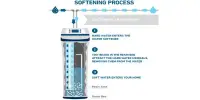Meet Xata, a novel perspective on managed databases from a startup. Your database is managed by the company, which converts it into an API that you can query and update from your serverless app. Xata has secured a $5 million round of investment. Although the product is not yet ready for prime time, the company is providing information about it.
Xata appears to be very well suited to Jamstack web pages. Jamstack is a popular platform for building and deploying large-scale websites. Netlify, Vercel, and Cloudflare Pages are some of the most popular Jamstack hosting platforms.
The majority of the logic is performed through API calls, and the applications are distributed on a global edge network. As a consequence, you’ll have a website or app that loads quickly and can handle a high volume of traffic.
Jamstack websites are simple to set up because they frequently link with your Git repository. Serverless platforms handle the deployment of your application when you commit code updates. Integrating with API-based developer tools is also reasonably simple because you are not in charge of the logic.
For example, setting up a website with static content and a Stripe checkout module is simple because Stripe takes care of the payment servers. If you wish to communicate with a live database, things get a little more complicated. To add a row, search through numerous rows, and find data, traditional database software does not rely on API requests over the internet.
Xata focuses on databases and wants to make integrating a database with your serverless app as simple as possible. Xata can scale the database for you, so you don’t have to worry about the underlying infrastructure. You don’t have to worry about updating software or moving data to a new server.
To increase response speeds and redundancy, your database is spread across multiple data centers. It accepts a variety of data kinds, including photographs. After then, communicating with the database is as simple as using any other RESTful API.
The company is also taking cues from well-known no-code companies like Airtable. You can access your database through a web browser and interact with it directly. For example, you can use the API query to filter the current view, sort data based on a specified criterion, and receive the API query to use in your code.
If your database has a large amount of data, you may use the free-text search tool to search through it. By producing charts and infographics, you may use Xata for analytics.
Xata’s competitive edge is the ability to interact with your data via a web browser. Many businesses choose Airtable as their first backend when developing a new project. This Airtable-as-a-backend data management approach could become a production-ready version of Xata.
















